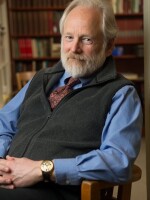Vermont's mountains were in tough shape. Delicate ecological areas like the arctic-alpine zones on Mansfield and Camel's Hump were being pounded by tens of thousands of Vibram-soled boots or devastated by indiscriminate camping and fires. Fifty years ago, traffic on major summits increased 30% every year as eager backpackers overran popular campsites up and down Vermont's Long Trail.The first serious mitigatation effort began in June 1969, when the Green Mountain Club placed caretakers at Taft Lodge on Mount Mansfield and Vermont stationed a ranger-naturalist on the Mansfield ridge.
At the time the most common management strategy was deterrence – a list of 'Thou shalt nots' that made users feel like idiots, if not criminals. But Vermont took a different approach under the inspired leadership of longtime activists Ken and Alice Boyd, original coordinators of the caretakers and rangers on Mansfield. Rather than shame people for behavior they didn't know was wrong, they'd strike up a friendly conversation, explain why the resource was important, and invite visitors to join a collective effort. They believed that understanding would lead people to change behavior and educate others.
As part of that effort for five years, I can tell you the one-on-one approach often felt like putting socks on an octopus. But over time the each-one-teach-one crusade caught on and spread: first to the rest of the Long Trail; eventually to the White Mountains, Adirondacks and beyond. Today, anyone who visits a popular summit or busy backcountry campsite encounters caretakers whose message is pretty much word for word what we were saying fifty years ago.
Last weekend the Green Mountain Club conferred its highest honor on the Boyds, recognizing their pivotal role in an environmental protection effort that's still going strong. Those little kids so conscientious about staying on rocky trails through arctic-alpine zones are grandchildren of the often-skeptical twenty-somethings we were trying to persuade all those years ago.
Today's visitors to Vermont's high peaks and busy Long Trail shelters continue to benefit from the visionary work of the Boyds and others they inspired to carry on the effort. To paraphrase what's said of Christopher Wren in St. Paul's Cathedral, 'If you seek their monument, look around.'





